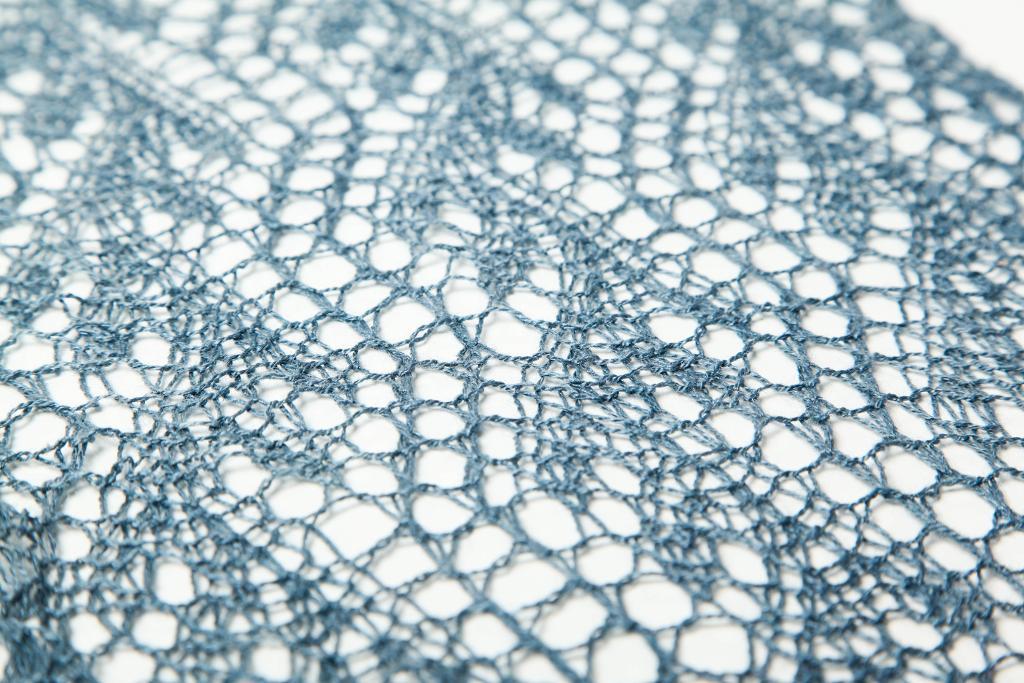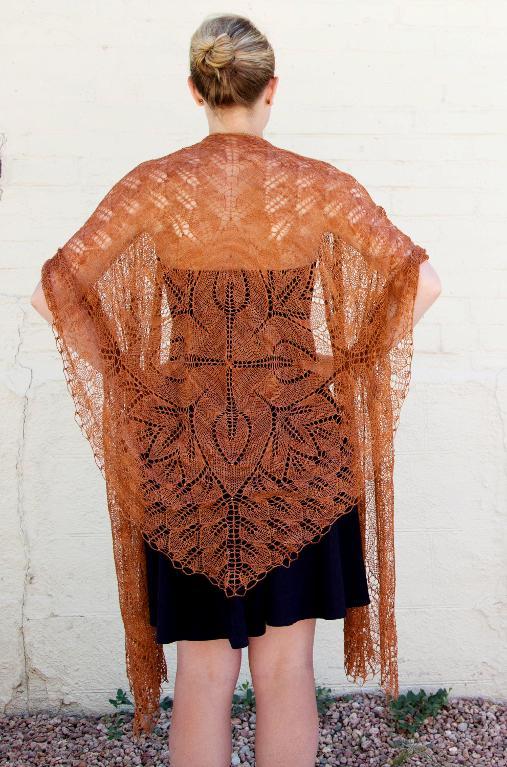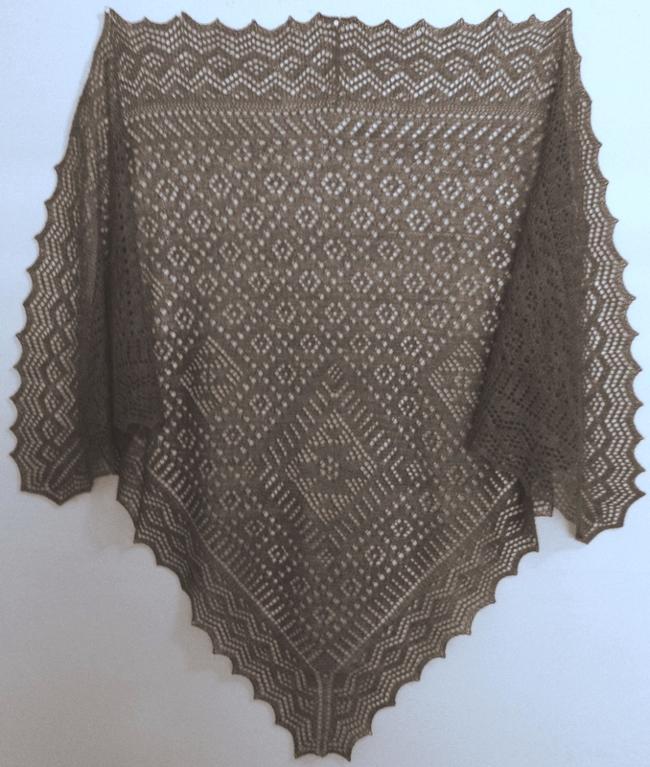Lace knitting has always been one of those types of knitting that gives me a little chill. Those delicate yarn overs and decreases can form anything from flowers to geometric shapes in a way that no other type of knitting can.
So where did lace knitting come from? Like most other knitting traditions, it’s difficult to pinpoint the exact history of lace knitting.

Lace-weight ocean scarf designed by Eunny Jang
What is lace knitting?
Before we can talk about the history of lace knitting, we have to dive into what lace knitting actually is. There are a lot of lace knitting purists out there who have a very strict definition for lace knitting. I’m not one of those purists. As long as the knitting is airy and involves yarn overs and decreases, I call it lace knitting.
Some books you’ll find on the history of lace knitting also talk about needlework, cutwork and other types of lace that eventually led to what we now know as lace knitting. We won’t be going in depth into any of those types of lacework. Instead, we’re just focusing on knitting and the forms of lace that we knit today.
[box type=”shadow”]You might enjoy our post on lace knitting stitches, or our post on beginner lace knitting.[/box]

Fiori Autunnali Shawl designed by Romi Hill
Famous traditions of lace
According to The Lace Guild, what we now know as lace knitting started around the beginning of the 16th century. The guild points out that since lace evolved from so many other techniques, like the needlework and cutwork mentioned earlier, it’s impossible to trace where lace knitting actually originated. However, we can break the lace knitting tradition down into three categories to give us an idea of its origins: Orenberg, Shetland and Estonia.

Photo via Bluprint member Russian Knits
Orenburg lace
Orenburg lace originated in the Orenburg region of Russia. Passed down from generation to generation through oral tradition, these patterns were the lifeline of many families. The tradition was so important that there was a government subsidy for the production of the lace. This subsidy came to an end in 1995, but luckily knitters like Galina Khmeleva decided to record and preserve the traditions so that they’d never be lost.
The Russian triangular shawl above features traditional Orenburg motifs, like honeycomb, peas, strawberries and others.
Get the Russian Triangular Shawl pattern.

Photo via Bluprint member JackieES
Shetland lace
Straight from the Shetland Isles, Shetland lace was made famous by British royalty who donned the lace. Shetland lace was said to be most popular during the reign of Queen Victoria, who often commissioned Shetland lace for herself and to give as gifts.
The Shetland tradition doesn’t stop with royalty. Even our Bluprint designers are busy honoring the Shetland traditioin, including member JackieES whose Elemental Changes Shetland Lace Pattern pictured above is available right here on Bluprint! Jackie used traditional Shetland motifs of spiderweb, double daisy and fan when designing the pattern.
Get the Elemental Changes Shetland Lace Pattern.

Photo via Bluprint member Emmy Petersson
Estonian lace
Estonian lace has its own set of unique stitches, including the nupp stitch. This is what differentiates Estonian lace from other traditions. The nupp stitch is used to create the Lily of the Valley, one of the most famous of all Estonian lace patterns. Another sign that something is made Estonian-style is the edging. Estonian scarves and shawls usually have a scalloped edge and if it’s constructed traditionally, the entire piece is sewn together in the center.
The beautiful Malva lace shawl pictured above uses the Estonian nupp stitch and other traditional stitches for the flower motif. You can also see how to make the Estonian lace nupp stitch if you want to find out more about this gorgeous lace.
Get the Estonian Lace Malva Shawl pattern.
More lace resources
Plenty of our Bluprint instructors are lace knitting experts, and they’re happy to rope you into the gorgeous patterns. Just be warned: you will get addicted to lace knitting!
Check out some of our lace knitting classes, like Lace Knitting: Basics & Beyond with Eunny Jang — perfect for lace knitting beginners.
For our more seasoned knitters, there’s Mastering Lace Shawls and Lace from the Inside Out with Laura Nelkin, plus Lace Shawl Design with Miriam Felton.
With all these great classes to choose from, you’re sure to be knitting lace in no time.

None of these links lead to the promised pattern. I wish they did!